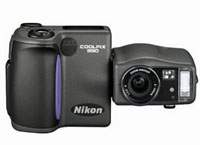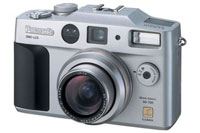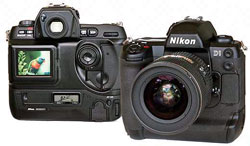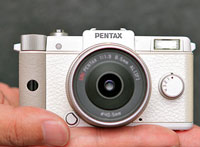(From Photo Review, Issue 50, Dec-Feb 2011/12)
Imaging technology has come a long way since the end of 2001. Back then, a handful of companies offered point-and-shoot models at what would be seen today as very high prices, while DSLRs were priced out of reach for most professionals, let alone enthusiasts.

Canon, Epson and HP were the main players in inkjet printing, but ‘photo quality’ was more PR spin than reality. Colour reproduction was pretty poor and prints faded within a month or two. Most people took their photos to specialist retailers for printing.
Manufacturers’ fortunes have varied during the decade – and so have the products we buy. New introductions like ‘tough’ waterproof cameras have succeeded while ‘bridge’ cameras with larger sensors and fixed lenses have largely failed. Camera phones have reduced consumers’ interest in entry-level digicams, while many snapshooters have moved up to DSLR cameras.
Looking back over 10 years, it appears the following factors are needed for products and services to survive in an increasingly competitive marketplace:
1. Consumers must really want them.
2. They must provide an obvious advantage over existing products.
3. The price must be right.
4. They must arrive at the right time to complement and expand existing products or services.
Looking back

In 2001, Kodak was the market leader with digital cameras in both the professional and consumer spheres and a network of affiliated retail processing outlets. Fujifilm, Nikon, Canon and Olympus were also strong participants, with Agfa, Konica, Pentax and HP among the minor players.
The ‘hottest’ digicams on the market were Canon’s first Digital Ixus and PowerShot G1, Nikon’s Coolpix 880 and 990 and a couple of 3x zoom cameras from Olympus, all boasting 3.1-megapixels.
In 2000, all camera sensors were charge-coupled devices (CCDs); three megapixel resolution was considered ‘hot stuff’ and memory card capacities of 8MB and 16MB were the norm. Fujifilm and Olympus introduced xD Picture Cards with great fanfare in July 2002, but by 2010 they had been phased out and replaced by Secure Digital (SD) cards, which were favoured by most manufacturers.
Even Sony’s Memory Stick products are being sidelined by the SD/SDHC/SDXC avalanche that has taken over as the main storage medium for consumer digicams and DSLRs.
Long shutter lag (usually due to slow autofocusing) was a major concern, along with poor power management. Most cameras back then were unable to support a day’s shooting on a single battery charge or set of AA batteries.
Raw file capture was almost unknown and editing software provided very basic adjustments. Photoshop was still in its infancy, with Version 6.0 released in September 2000. We had to wait until August 2002 for the first Camera Raw plug-in.
Enter the electronics giants

Several electronic manufacturers saw opportunities in digital imaging and had technologies they could capitalise upon. Only three survive in Australia as major players at the end of the decade, largely through a strong presence in the camcorder market and because they can produce key camera components like sensors in-house.
Panasonic launched its Lumix brand in September 2001. The first models, the DMC-LC5 and DMC-F7, sported Leica-branded lenses, which were designed in Germany but assembled in Japan. During the decade, Panasonic has made several important innovations.
It popularised the extended-zoom concept with the FZ series, which featured SLR-like styling. It also invented a new ‘travel zoom’ (TZ) category, featuring long zoom lenses in small camera bodies, with the Panasonic TZ1 announced in February 2006. It has been a leading player in the ‘tough’ waterproof/shockproof category and a pioneer in adding video and 3D capabilities to its digicams.
Sony’s original Mavicas (magnetic video cameras) were replaced by truly digital Cyber-shots in 1996 and finally phased out in 2003. An alliance with lensmaker Carl Zeiss forged early on continues to this day.
The first Samsung digicams were announced in 2002. The company has been a prolific producer since then, designing mainly point-and-shoot models. It produced four GX-series DSLR cameras between 2006 and 2008, using Pentax camera bodies before launching its own NX series of mirrorless interchangeable-lens cameras in January 2010.
Product milestones

At the beginning of the decade, DSLR cameras were the province of professional photographers. Kodak had sensors in both Nikon and Canon pro SLR bodies, selling cameras as DCS models with an ‘n’ suffix for the former and ‘c’ for the latter.
Nikon’s D1 was also on sale. With a 2.7-megapixel sensor, base sensitivity of ISO 200 and 4.5 fps burst speed, it was the first purpose-designed DSLR on the market, and priced well below the Kodak models. Although beyond the average enthusiast’s reach, this camera is credited as beginning the end of the film era for professional photography.
Canon, meanwhile was developing its own purpose-built professional DSLR and announced the 4.1-megapixel EOS-1D on September 25, 2001. It boasted a top sensitivity of ISO 1600 plus continuous shooting speeds of 8 fps for 21 JPEGs or 16 raw files.
This activity in the professional market led photo enthusiasts to seek an affordably-priced DSLR system to replace their film-burning cameras. Although Canon and Nikon each offered ‘pro-sumer’ models (with price tags of several thousand dollars), we had to wait until August 25, 2003 for Canon to unveil the EOS 300D, the first DSLR camera to go on sale in Australia below $2000.
This camera was a real ground-breaker because it also introduced the EF-S lens mount, which took advantage of the camera’s 22.7 x 15.1mm CCD sensor to enable Canon to develop smaller, lighter lenses, a theme that continues today. Featuring 6.3-megapixel resolution, up to ISO 1600 sensitivity, a 2-inch LCD monitor with 118,000 dots and a maximum burst speed of 2.5 fps for 4 frames, the EOS 300D ticked a lot of boxes and sold in bucketloads, placing Canon in a strong position to dominate the market.
Nikon quickly fought back, announcing the D70 in late January, 2004. However, it didn’t match the 300D in resolution, features or pricing. In 2005 Olympus unveiled its E-330, the first interchangeable-lens camera to provide ‘live’ viewing. This camera had a second sensor in the viewfinder housing that directed a video image to the LCD monitor, giving users the same facilities for composing shots as they had on compact digicams.
It wasn’t long before other camera manufacturers figured they could take a video signal directly from the camera’s sensor. In August 2008, Nikon announced the D90, the first DSLR capable of recording movies. Today, almost all cameras (digicams and interchangeable-lens models) support Full HD video recording, often with stereo soundtracks.
Konica merged with Minolta in August 2003 and released the Maxxum 7D, first DSLR with in-body image stabilisation. This system has been adopted by Pentax, Olympus and Sony and integrated with sensor-shift dust-removal systems.
Meanwhile, other manufacturers concentrated on lens-based stabilisation systems, which imposed higher manufacturing costs but were slightly more effective. Except for wide-angle lenses (where it’s not essential), stabilisation is available for most lenses in the leading manufacturers’ ranges.
Sensor technology continues to evolve, driven towards higher megapixel counts and increased light-capturing efficiency. Sony introduced backside-illuminated (BSI) CMOS sensors in 2009, offering increased efficiency in light collection. These Exmor R sensors have become popular and are also being used in the latest smart phones.
In August 2010 Sony began another revolution with its 16.2-megapixel SLT-A55V, which resurrected the pellicle mirror viewing system first used by Canon in 1965. Sony’s Translucent Mirror Technology (TMT) technology splits the light from the lens into two separate beams, one passing to the recording medium (sensor) and the other to the viewing system.
Whereas this technology was abandoned by Canon because the viewfinder image was too dark, Sony has replaced the optical finder with an electronic viewfinder, which enables the image to be amplified. Because the mirror doesn’t flip up and down as it does in a regular SLR, TTL autofocusing is much faster and higher burst speeds are supported.
Subsequent cameras in Sony’s SLT line-up have improved the quality of the viewfinder image, further boosted continuous shooting speeds and improved video recording. This augurs well for future developments and may tempt other manufacturers to develop similar DSLR systems.
Niche products

Despite offering richly-featured cameras at competitive prices, Pentax has remained a relatively minor player in the market. It created a frisson of excitement with the release of its first DLSR, the 6.1MP *ist D in 2003. Four more models bearing the unpronounceable *ist name were to appear before the company decided a better nomenclature was needed, releasing the K100D and K110D in May 2006.
Sigma, too, has remained largely on the sidelines, despite its adoption of the revolutionary Foveon X3 sensors, which record colours at three discrete levels in the imager chip. The first Sigma DSLR, the SD9 was announced in February, 2002 with the latest, the SD1 in September, 2010.
The company has also used Foveon X3 sensors in its DP-series of non-interchangeable-lens compact cameras, of which five have been released. However, it has a history of long delays between when products are announced and when they go on sale. Foveon sensors are also costly to produce and have certain issues that lead photographers to have a love/hate relationships with them. Sigma purchased Foveon late in 2008.
Ricoh is another manufacturer with a niche product in its GXR system, which was released in late 2009. Consisting of a camera body that accepts interchangeable sensor-plus-lens modules, it enables consumers to select from several modules according to their wants, needs and budgets.
Despite providing a development platform for the company without making an existing camera body (and all the technology it contains) obsolete, progress has been slow. Only a handful of sensor-plus-lens modules have been released so far.
New systems

The past decade has also seen the introduction of some new interchangeable-lens camera systems. The Four Thirds System, which was announced at Photokina 2002, was a big step away from the traditional film formats. Designed from the ground up to be entirely digital, it was based around an 18.0 x 13.5mm sensor.
The system was created by Olympus and Kodak but Kodak never developed any cameras for it, leaving Panasonic to take up the slack. A prototype camera was shown at the launch by Olympus but the first real product wasn’t released until June 2003.
The E-1 had an 18.0 x 13.5mm Kodak CCD with 5MP resolution and an ISO range from 100-800 with up to ISO 3200 available via ‘ISO boost’ interpolation. It also introduced SuperSonic Wave Filter dust removal, which has been used as the basis for other manufacturers’ dust-removal systems.
The latest Olympus DSLR, the E-5, is viewed widely as the end of the line. Olympus has concentrated its efforts on Micro Four Thirds (MFT) models. The Micro Four Thirds system represents an evolution of the Four Thirds System in which the camera’s reflex mirror is eliminated, dramatically reducing the distance between the back of the lens and the sensor.
Panasonic had a brief flirtation with DSLR cameras, releasing the DMC-L1 in 2006 and the L10 in 2007, but swapped to mirrorless technology with the release of the DMC-G1 in late 2008. The latest models released cover all market sectors from serious enthusiasts to point-and-shooters.
Although many mirrorless cameras lacked optical viewfinders, camera users had become so accustomed to composing shots on LCD screens that few complained about the omission. And for those who did, electronic viewfinders – either built-in or add-on – were provided.
So far MFT is only supported by Olympus and Panasonic but by the end of August 2011, 32 lenses were available from a range of manufacturers. Both manufacturers have made strong commitments to this system, producing a string of camera bodies and lenses to date. With the lens mount standardised, we predict a strong future for this system.
Other new formats within the mirrorless interchangeable category include the Pentax Q, which was announced in June 2011 and based on a 6.16 x 4.32mm 12.4MP CMOS sensor; and the Nikon 1, which was launched in September 2011 and built around a 13.2 x 8.8mm CMOS sensor with a 2.7x crop factor and 10.1-megapixel resolution.
Nikon may have a genuine innovation in its new AF system, which embeds phase detection AF sensors in the surface of the image sensor. This technology promises even faster autofocusing than Sony’s TMT technology, although we still have to see the results of product tests.
The next decade
You might be wondering what the next decade could hold. Without doubt, imaging technology will continue to evolve, delivering cameras that are more capable and easier and more satisfying to use. Mirrorless cameras are certain to play a major role in future product developments, but there’s bound to be a shake-out of sensor size formats as there are simply too many options on the market.
Fujifilm has announced the launch of an interchangeable lens mirrorless system early next year. According to company president and CEO, Shigetaka Komori, it will be built around a larger sensor and ‘resolution and low noise will surpass the 35mm full size sensor’. Whatever that means, it appears likely to build on the buzz created by the X100 roughly a year ago.
Photo enthusiasts looking for a compact system camera may well be drawn to a new high-end model that was added to Panasonic’s G-Micro system just before Christmas.
The performance differences in sensor size between APS-C and MFT are pretty small. Yet the smaller sensor format enables manufacturers to produce smaller, lighter lenses than the larger format rivals. Small size and portability combined with high image quality are the key factors in determining whether buyers will consider these types of cameras.
With a useful suite of existing lenses already available for the MFT cameras from Panasonic and Olympus, it appears this system will have longer ‘legs’ that current alternatives.
We’re betting this system will persist for much longer than the current ILC systems offered by Pentax, Nikon, Samsung – or even Sony.
– Margaret Brown, Photo Review





Be First to Comment